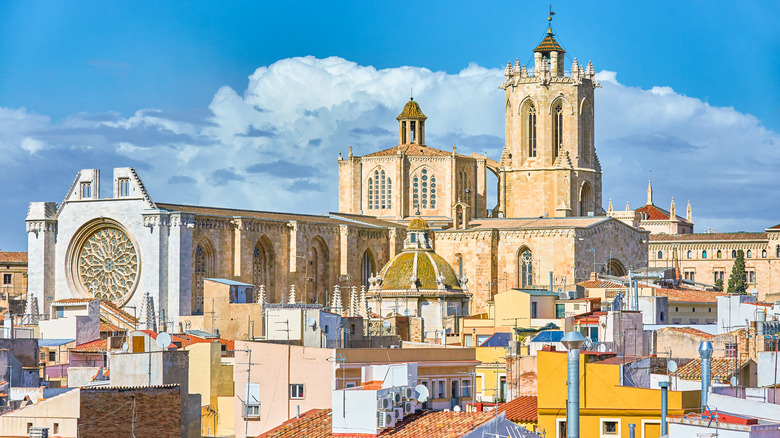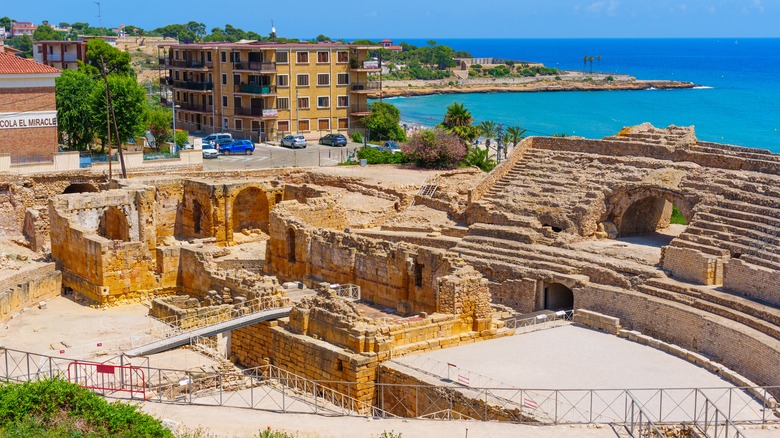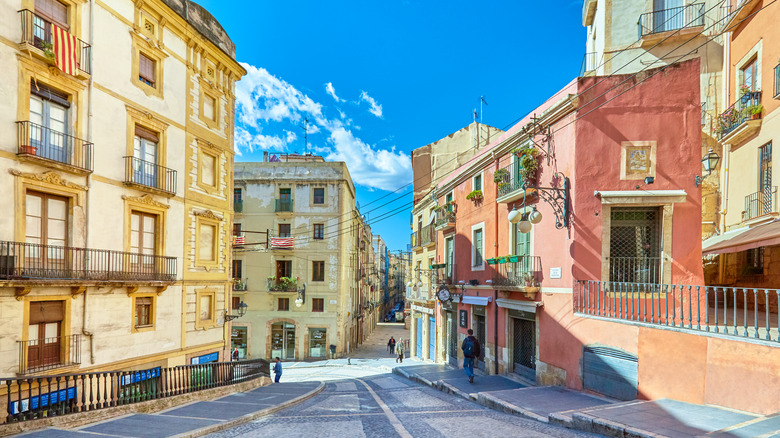For A Cheaper And Less Crowded Alternative To Barcelona, Visit This Nearby Spanish Paradise
Do the high prices in Spain's largest port city have you sweating as you're planning your trip to the Catalan coast? Why not trade out pricey Barcelona for something a bit more laid-back instead? Roman ruins, sprawling beaches, and cobbled streets can all be found just a little more than an hour down the coastline.
Tarragona is a hidden gem that's just waiting to be explored. Situated on the Costa Daurada, this Catalonian coastal darling is often overlooked for larger cities in the region, along with other classic seaside escapes like Cadaques and Sitges. Whether you're simply taking a Spanish road trip to the west of Barcelona or if you're looking for a secluded getaway along Spain's Mediterranean coast, Tarragona is the perfect, sun-kissed alternative. Swap the crazy crowds and endless lines to siesta away the days in the sun, feel like a local in the sleepy streets, and even get to enjoy popular attractions all by yourself.
Ancient amphitheaters sit on the sun-drenched shores of the Mediterranean, an almost menacingly beautiful cathedral watches over the city from its precipice, and turquoise water laps golden sand. If it was good enough for the famous Roman Emperor Augustus, you might just fall in love with this seaside city too!
How Much Does a Visit to Tarragona Cost?
When compared to Barcelona, traveling on a shoestring budget is much easier to achieve in Tarragona. Everything from accommodations to meals will cost less. A quick search via Booking.com reveals that the average nightly price of a hotel in Barcelona's city center in August is around $207 a night, while Tarragona is only $99. Airbnbs offer a similar price difference, with the average night in August in Barcelona's city center coming out to around $221, while short-term rentals in Tarragona average out at $144 a night.
Getting to Tarragona is fairly inexpensive as well, with train tickets from Barcelona running about €8-€12. Bus tickets are similar, although a bit less comfy, at €10. While Barcelona does have a very walkable central city core, taking the metro or a taxi is an added expense that travelers need to factor in. Luckily, Tarragona is much smaller; visitors can walk across the city in 30 minutes, which is another of the many money-saving swaps that Tarragona offers versus larger Spanish cities.
Visitors will also find cheaper, laid-back restaurants serving up traditional dishes like masqueta, the Tarragona take on paella, and calcotada. Even attractions are less expensive; tickets to the Tarragona Cathedral are just €11, while the Sagrada Familia in Barcelona comes in at a whopping €65.75.
Spending the Perfect Day in Tarragona
Despite being a small city, Tarragona packs a punch when it comes to things to do. While you'd be justified in spending a few days exploring the city's sparkling beaches and streets, most visitors come for a quick day trip from Barcelona. If you're one of those who only have a day to explore, start with the mammoth Tarragona Cathedral in the Part Alta neighborhood. Perched on a hill overlooking the city, within the cathedral you'll also find the Diocesan Museum, chock full of impressive Medieval artifacts.
No visit to Tarragona would be complete without visiting the city's many Roman ruins. Once a beloved corner of the world for Emperor Augustus of Rome and a thriving Roman colony, remnants of the ancient culture are scattered throughout the city, but none are more impressive than the Roman Amphitheatre. Known as Tarraco in the Roman era, the Roman forum, Ferreres Aqueduct, Paseo Arquelógico, and Circ Romà are all worth visiting to piece together the story of Tarragona's ancient roots.
They don't call it the Costa Daurada (the Golden Coast) for nothing! You can also choose from one of several beaches that dot the city's 15 kilometers of coastline. The sweeping Platja del Miracle makes for a wonderful swimming spot while Platja de l'Arboçar offers a more back-to-nature approach, with craggy cliffs and vegetation clinging to the hillsides.


